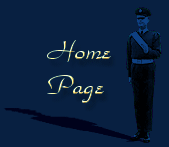|
|
|

Malaya 1947-48 Formation of the RAF Regiment (Malaya)
| In early 1947
I learnt that the RAF intended to create a native force to be called The
Burma and Malayan Levies and I volunteered for this posting and in a matter
of weeks I was on my way by troop ship (the “Dunera” which later had infamous
connections with Australia) from Port Said to Singapore.
After disembarkation at Singapore I was taken to RAF Changi for briefing on the new Force, which took a few days, and then it was on a train to RAF Station, Kuala Lumpur. Station accommodation there was in Atap (straw walls and roof) huts; our dining room was of similar construction though bigger (our living accommodation was in a private house at Ampang Road near the Kuala Lumpur Racecourse). The single runway was rolled earth and had on it a collection of Japanese aircraft awaiting scrapping and some 300 Japanese ‘Surrendered Enemy Personnel’, the term for prisoners-of-war of countries not signatories to the Geneva Convention. The British flying element was provided by No.1914 AOP Flight (Army Aviation Regiment ‘to be’) which had Auster Eight aircraft - in which I spent whatever time I could getting flying experience in light aircraft. We soon learned that the Burma element of the proposed Force was not to be and we were re-named the RAF Regiment (Malaya). We set about preparing the camp to receive recruits - the only building large enough for Recruit Swearing-In purposes was the Church of England Chapel! That was also an Atap structure. We removed all crosses, clerical signboards and furniture so that our Muslim intended recruits would not be offended. Recruiting parties were sent off to various Malayan States, and with my group (driver, interpreter and medical orderly) went to North East and North West Malaya, and on completion of our task we returned to Kuala Lumpur. The Malayan response was overwhelming - though some subversive elements who gathered outside the Base spread the rumour we were ‘recruiting Malays to fight the Russians!’ Someone had forgotten to acquire a few Korans on which to swear in our recruits and much to my surprise we overcame that by covering some Bibles with Malayan decorative paper - and so the RAF Regiment (Malaya) was formed. I was assigned to No. 91 Rifle Squadron whose C.O. was Squadron Leader Crew (‘Tubby’ to his friends). Working with Malay airmen and ultimately Malay NCOs was a pleasant and rewarding experience. They adapted well to Service life and though of Muslim faith, they were at that time ‘relaxed followers.’ I doubt the same could be said of Malay servicemen today. Kuala Lumpur, the National capital, was a very pleasant place to live in 1947-48, devoid of hustle and bustle or the sky-scrapers of the 1990s. Apart from training programs, jungle warfare exercises and the like filled our day. In late 1947 the Burmese Government of Premier U Aung San was assassinated. The country, still under British control, was placed on national alert and I was one of five Officers flown to Rangoon (Mingaladon Airfield) to take over ground-defence duties in the RAF Units still in Burma. In Rangoon itself, I was attached to No.2 Forward Equipment Unit which consisted of one RAF Officer, some RAF personnel, one British civilian and some local employees. The Unit shared the premises of the Thomas De La Rue (Banknote printers) Company. Shortly after my arrival a platoon of the Rajputana Rifles was allocated to us for the defence of the premises. Understandably the atmosphere was very tense in and around Rangoon. The country was still recovering from the Japanese occupation and consequently the capital looked drab and neglected. Gangs of professional robbers and murderers, for which Burma was then noted, added to the tense atmosphere and made one ask ‘Is my intended journey really necessary?’ The De La Rue Manager, the O.C. Equipment Unit and I shared the De La Rue House adjacent to the Unit - a break-in was attempted one night but a shot fired by me through the back entrance door put to flight the would-be robbers. At a briefing one day at Mingaladon Airfield I discovered the Commanding Officer was a Group Captain A.P. Campbell. He had been the Station Commander at Mepal when I was on 75 N.Z. Squadron and had flown with our crew on a raid on Cologne on 31 October 1944. We had a long talk about that period and the different situation we were now in. All my Regiment colleagues returned to Malaya after some 6-8 weeks in Burma but I was retained in Rangoon despite signals from Kuala Lumpur seeking my return. Eventually after another 6 weeks my return to K.L. was approved, though I was not in any hurry to do so! In 1948 an Emergency was declared in Malaya when local Communist Terrorists carried out attacks on isolated rubber plantations, their Managers, and Police posts, and so began an operational period which lasted until 1960. The RAF Regiment (Malaya) was deployed on jungle patrols and escort work and worked in close cooperation with the Malayan Police, District Officers and Army units. It was tough work, unpleasant at times, especially in thick jungle, an experience I was to return to again in 1950-53 on a further tour with the RAF Regiment. |
